I’ve never liked making “top favorite” lists in genres where I am so painfully aware of how little I’ve experienced in contrast to how much of it still exists waiting for me. Making a list of my favorite impossible crime novels specifically felt impossible because I’m just so, so, so aware of how many likely very good locked-room mysteries are sitting in my to-be-read pile right now. It’s worse, in fact, since I’ve started studying Japanese and have become more aware of a whole new world of obviously brilliant mystery novels. My personal horizon is so narrow, but the potential is so broad and it makes me feel like any list I make will come off as pedestrian. That’s why I’ve labeled this “revision 0”; I’m confident that by this time in 2023 the list will look immensely different. Maybe 33% of the entire list will be traded out by that time, I’m sure, and there will be at least one revision
This list is media non-specific. Television, movies, video games, comics may all apply. This is also why I’ve also settled on 15, rather than 10, because in the making of this list I realized that it was hyper-dominated by locked-room mysteries from Japanese novels and non-novel media, and I wanted to make some room for good, accessible, western media too. I’ll also only include one full entry from an author, including honorable mentions if necessary. Having qualified my list and the title of the post, my top 15 favorite impossible crimes, in no particular order, are…
Death of Jezebel – Christianna Brand (1949)
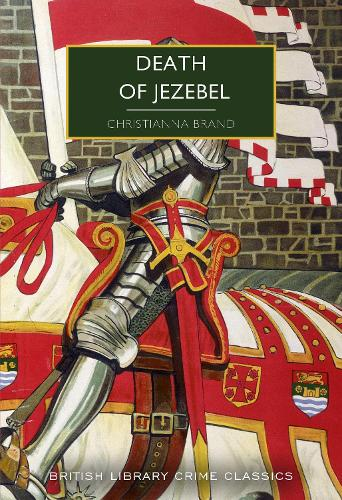
Anyone who has ever spoken to me will not be surprised by this being my immediate first inclusion on a list of favorite impossible crimes. Not only is Death of Jezebel my favorite Christianna Brand novel, not only is it my favorite impossible crime novel, it’s simply my favorite Golden Age mystery novel ever written. Christianna Brand is in top-form at demonstrating her ability to build up entire false narratives and hoodwink you into them, to bait the audience into believing things without ever really saying or doing anything. A masterclass in misdirection, the murder of a woman in a locked-and-guarded tower during a play also features multiple grand mechanical and technical tricks that are clever, novel, and macabre. One of four Brand masterpieces that I think even people with no interest in impossible crimes should give a chance.
The Moai Island Puzzle – Arisu Arisugawa (1989), trans. Ho-Ling Wong (2016)

The impossible shooting that occurs in this novel is a very strong alibi trick, but as good as it is this element of the story is only a small part of what makes The Moai Island Puzzle so strong a contender for fans of mysteries-as-a-puzzle. Puzzles buried within ciphers wrapped within riddles and tied-up with lateral thinking problems are the name of the game with this novel that celebrates puzzles as almost like an artform. A brilliantly intriguing and cerebral mystery novel.
Whistle Up the Devil – Derek Smith (1953)
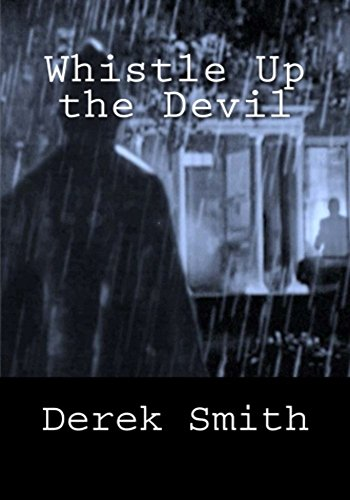
Cringe-inducing romance and overly-convoluted climax aside, this is a homerun of an impossible crime novel. The principle murder of a man conducting a ceremony within a supposedly haunted room is just a good offering, with a complex arrangement of what still amounts to a quick series of little tricks we’ve all seen before, obvious bits and pieces and sleights of hand, but nonetheless enjoyably convoluted. What elevates this novel from good to fantastic is the knee-slapping devious and blastedly simple alibi trick employed in the secondary murder in a police station that nobody ever walked into or out of, aside from two men who were in each other’s view for every point of time that mattered. This short story-length masterpiece hiding in an otherwise just-above-average impossible crime makes this well-worth reading.
Here I want to give a quick honorable mention to Derek Smith’s other novel, Come to Paddington Fair, which if you were to ask me probably has a more brilliantly-plotted and conceived central murder, and a much more unique trick. I neglect to mention it as a proper entry on the list, because I felt like when you realized that coincidence doesn’t exist in a deliberately-plotted world the beginning of the story spoils the resolution in such a way that it makes much of the ensuing investigation feel redundant. Come to Paddington Fair is a fantastic idea, but unfortunately relies so majorly on an early Christie-esque dodge that, if you’re not hoodwinked by it, ends up toppling the whole story and every misdirection that comes after it. I noticed the initial dodge immediately, and pieced together the rest of the plot before the story had even hit its stride, and that did dock a few points for me. I still heavily recommend it, because while I feel like it spoils itself by being too clever by half, I think I’d always prefer a too-clever-for-itself story to its dull counterpart any day — it’s novel, unique, and a very intelligently plotted crime novel with a very innovative take on how to establish an impossible crime.
Murder in the Crooked House – Sōji Shimada (1982), trans. Louise Heal Kawai (2019)
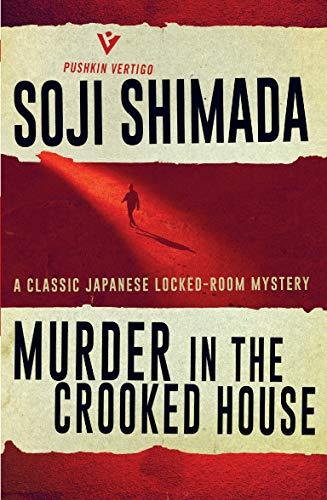
Sōji Shimada is the Japanese locked-room murder, well known for his output of well over 50 novels featuring locked-rooms and other various impossible murders. His other major impossible crime offering, The Tokyo Zodiac Murders, which is also available in English is much more well-known and equally deserving of praise for its brilliance and grandiosity of mechanical scale, but I just adore Murder in the Crooked House. Sōji Shimada, I feel, is an author you’ll either adore or hate. His settings and solutions are brilliant and original, but also stretch credulity and highlight above anything else the puzzle. As a sheer lateral thinking exercise, Murder in the Crooked House contains one of the best impossible crimes in any novel ever, even if I can’t confidently say it’s one of the best novels containing an impossible crime. It is wholly original, complex, intricately-plotted, and taut, and a fantastic puzzle from end to end with a fantastic method for committing murder in a triple-locked room that more than makes up for its obvious culprit.
Time to Kill – Roger Ormerod (1974)
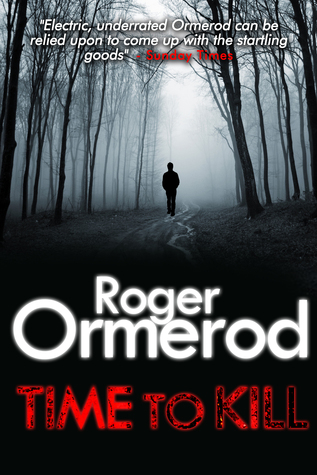
Roger Ormerod is an author who wrote well after the Golden Age had ended. Despite this, his novels had all of the fairly-clued plotting and cerebral misdirection and alibi tricks as a novel from the 1930s, blended with the aesthetic of a gritty contemporary PI novel. His debut novel is an impossible alibi problem — from the moment the murder is committed, we know who the killer is, but there’s one problem: the killer has an airtight alibi provided by the narrator himself and we have no idea how he committed this murder under such impossible-for-him circumstances. I used to think that there were only three basic explanations for the impossible alibi, but Time to Kill offers a fourth possibility that to this day is still my favorite explanation for this particular problem. It perfectly sets up Ormerod’s thorough and educated understanding of Golden Age-styled alibi trickery almost in the style of Christopher Bush — a lost disciple of the puzzle mystery that more people should be seeking out.
Till Death Do Us Part – John Dickson Carr (1944)
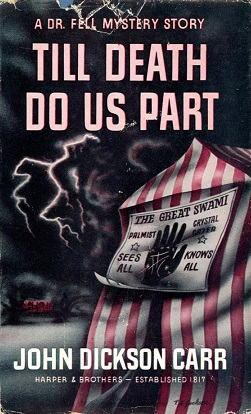
Despite being a self-styled disciple of the impossible crime problem, I’m actually incredibly ashamed to admit that my reading into John Dickson Carr’s oeuvre is very limited! My first review on this blog was me airing out how little I enjoyed The Case of the Constant Suicides. Aside from that, I’ve only read a small handful of specially-recommended Carrs, only around 10 I think. I’ve been so caught-up in reading other impossible crime novels that I’ve neglected to honor the master himself! Let this be a wake-up call to me to get back to Carr…
Till Death Do Us Part is absolutely the most brilliant locked-room conceived by Carr that I’ve read. Preceded by expectation, nobody needs to know what I have to say about this book. It’s damnably simple and clever, the puzzle is brilliantly conceived, the cluing clever and well-done.
Jonathan Creek (Season 1 Episode 2) “Jack in the Box” – David Renwick (1997)
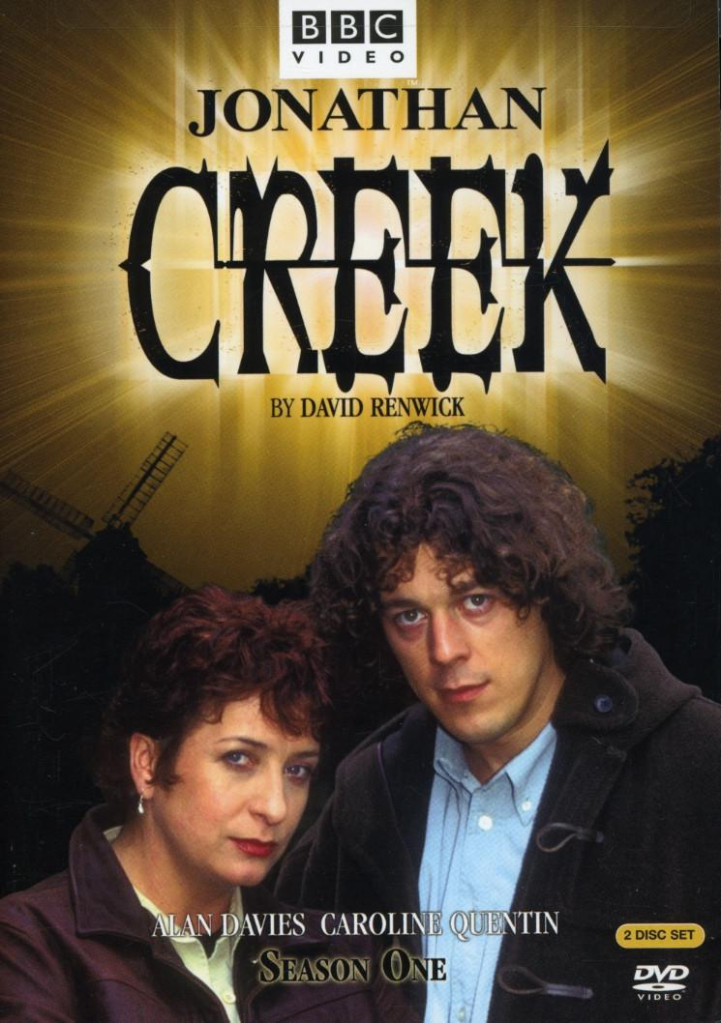
Jonathan Creek is a late 90’s-early 2000s BBC drama featuring the titular magician’s assistant who uses his knowledge of stage illusions to solve locked-room murders and impossible crimes. I think the series is incredibly hit-or-miss, containing both some of my favorite and least favorite locked-room mysteries ever conceived, and it might be a little worrying that in Jonathan Creek‘s 17 year run I think the show peaked in its second episode ever…
There are more than a small handful of fantastic impossible crimes in this series, actually. The Christmas special “Black Canary”, the first episode of season two “Danse Macabre” are both also great, but “Jack in the Box” really perfected the formula right out of the gate with a satisfying and original explanation to the shooting of a man in a locked-and-sealed bunker that entirely inverts the very premise of a locked-room murder as a question of how the killer escaped from the room.
The Great Ace Attorney 2: The Resolve of Ryūnosuke Naruhodō (Case 3)
“The Return of the Great Departed Soul” – Shū Takumi (2017)

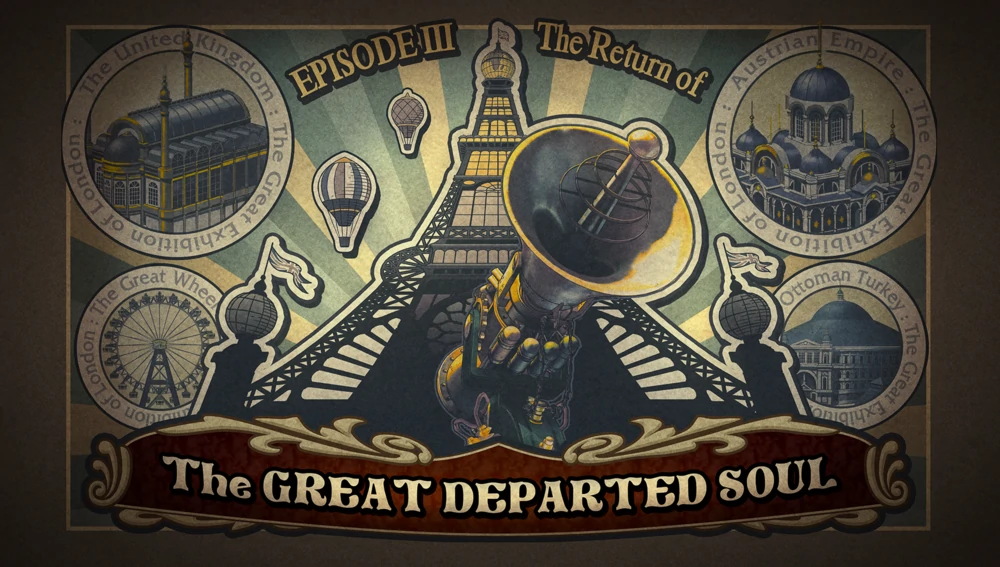
Phoenix Wright: Ace Attorney is a Japanese mystery video game series, one game of which I’ve reviewed on this blog. In Phoenix Wright: Ace Attorney and all of its subsequent spinoff titles, the player takes on the role of a lawyer tasked with proving the innocence of clients falsely accused of murder. Using a point-and-click interface, the player investigates crime scenes, interviews wacky witnesses and suspects, and collects evidence. The next day, the player goes to court and is tasked with cross-examining witnesses who are either grossly mistaken about what they saw or hell-bent on seeing your client behind bars and deliberately lying. Through a series of simple question prompts, the player finds lies in testimony statements, presents evidence to expose the lies, and then is loosely-guided on a series of Ellery Queen-esque sequences of deductions and logic where the player explains why the lie was told or the mistake was made and then what the truth of the situation is. By the end of every case, the real killer is discovered and your client is saved from wrongful imprisonment!
In the spinoff series The Great Ace Attorney the format is shaken up by placing the player in the role of Phoenix Wright’s ancestor Ryūnosuke Naruhodō, a Japanese lawyer who teams up with the Great Detective Herlock Sholmes in Victorian London. The third case of the second game of this particular series is a very unique take on the impossible crime problem, inspiring one of my 15 categories of impossible crimes — the impossible technology problem!
Your client is a scientist who was presenting an instantaneous kinesis machine, a piece of technology that is capable of molecularly dissembling any human subject and then reassembling them somewhere else, allowing them to teleport from one location to another in the blink of an eye! Unfortunately, during the presentation, his assistant and test subject was teleported to the wrong location. While he was meant to be transported to the INSIDE of a nearby glass tower, the test subject was instead manifested a few dozen feet in the air above the tower, whereupon he fell through the walls of the tower. The police were summoned only to find the man stabbed to death by a screwdriver through the heart. Since the tower was totally inaccessible to anyone until the police arrived, it’s determined that the only person who could’ve committed this murder is your client, who must’ve stabbed the victim before teleporting him away. In order to prove your client’s innocence, you need to prove how the teleportation could’ve been faked! But how else can you explain a man moving hundreds of feet into the air in less than a second…
The solution to the teleportation isn’t at all difficult to figure out, but there’s a second and third puzzle hiding in the background of this case that makes it brilliant. The true explanation for the murder when you get past the impossible problem is genuinely shocking, and there are quite a few plot threads that connect this murder to an ages-old serial killing that the rest of the game’s narrative is concerned with. A brilliantly innovative presentation of impossible crimes, the method of connecting this subplot to the overarching narrative of the game is a masterstroke of writing, and a somewhat obvious impossible solution doesn’t stop the mystery from offering up some genuine surprises. One of the best cases from a very, very good mystery series.
Death Among the Undead – Masahiro Imamura (2017) trans. Ho-Ling Wong (2021)
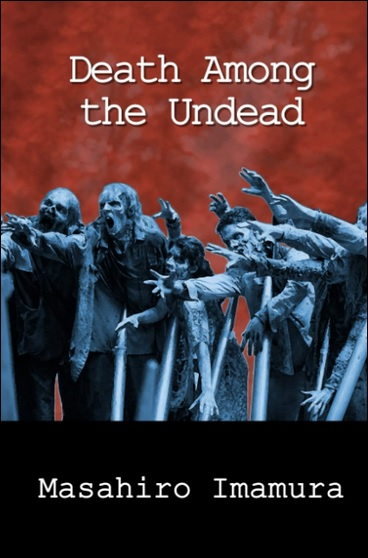
One of the most defining features of the shin-honkaku movement that I feel like westerners don’t see from just the translations we get from Vertigo Pushkin and Locked Room International is the amount of authors who love to experiment with form, style, and genre without betraying the underlying and ever-present element of a complex, cerebral puzzle. Hybrid mysteries, the sort we get from Isaac Asimov’s sci-fi mysteries like The Cave of Steel, are even more present in modern Japanese mystery writing than they ever were over here! There are authentically Golden Age-styled mysteries written to take place within the confines of a world that operates under the rules of a fantasy roleplaying video game, or mysteries set within fantasy worlds. There’s a short story collection about a group of murderers who share stories of their exploits over an internet board and every story is a different member of the board. And then there’s Masahiro Imamura’s breakout hybrid mystery, Death Among the Undead, which combines the locked-room mystery with a zombie apocalypse!
Death Among the Undead is a brilliant piece of work with three absolutely stunning impossible crimes that all three offer up entirely novel and unique explanations to the problem of murders committed in locked-rooms either provided by or enhanced by the presence of a horde of brain-eating undead! This novel is an absolute jaw-dropper of plotting genius that can confidently stand with its head held high among any classic of the genre. It is no less a classic, puzzle-driven impossible crime story for the presence of zombies — in fact, I’d say it’s even more so, as the rigid rules that the zombies abide by offer an extra layer of complexity and reasoning. Simply fantastic.
Death in the House of Rain – Szu-Yen Lin (2006) trans. (2017)
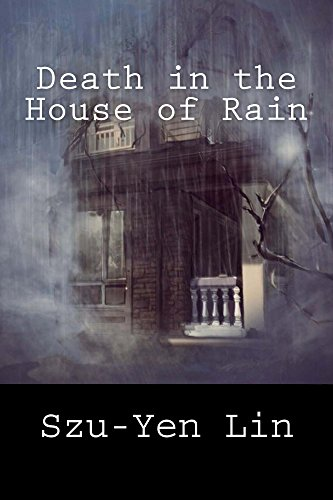
Death in the House of Rain is a dangerous impossible crime novel, because its an idea that I feel like could’ve easily failed. It doesn’t succeed on the strength of its core idea alone, but on the framing of its idea through the personification of fate and fortune as almost its own character, which arguably is the true killer, above anyone else who might’ve committed murder in the story. The solutions to the three first disparate locked-room murders are all connected by a single thread that is very devious and devilishly simple, brimming with an original idea whose reliance on coincidence could’ve easily failed if not for the underlying theme of fortune. It’s, in fact, an idea I proposed in my List of 50 Locked-Room Solutions which people often privately criticized me for because no impossible crime existed which could claim to use the solution, so I’ll admit I’m a little biased from reading this book and getting that feeling of aha! I told you!.
A fourth impossible crime brilliantly rises from the resolution of the previous three as a connecting thread, and it’s just as good as you could hope. This novel is fantastic, but easily could’ve not been.
The Kindaichi Case Files Shin (Case 3) “The Prison Prep School Murder Case” – Seimaru Amagi (2006)

I actually know very little about the Kindaichi Case Files franchise or its sister series Detective School Q, having only organically read one or two mysteries from each of them. They weren’t bad at all, mind you! Honorable mention to Detective School Q‘s first proper murder mystery for being blindingly brilliant, actually! However, I was directed to this particular case by TomCat’s blog post on this very same topic, and reading it honestly reawoke my interest in the two franchises! This is ingenuity distilled into its purest form, plain and simple, with a grand, brilliant, and complex impossible alibi trick at the heart of it.
Both Kindaichi Case Files and Detective School Q are classic examples of the locked-room mystery puzzle plot in the realms of anime/manga series, and having read one of the best impossible crime stories of all time by sheer chance in these series I can easily recommend anyone and everyone to seek this series out and read it if they have even a tiny interest in locked-room mysteries. John Dickson Carr would be proud of these two detective series. I read this case in Japanese in the manga, but the anime adaptation is available in English for anyone curious!
Case Closed/Detective Conan (Anime-original, Episodes 603-605)
The Séance’s Double Locked Room Mystery Case – Chiko Uonji
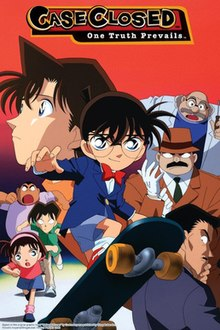
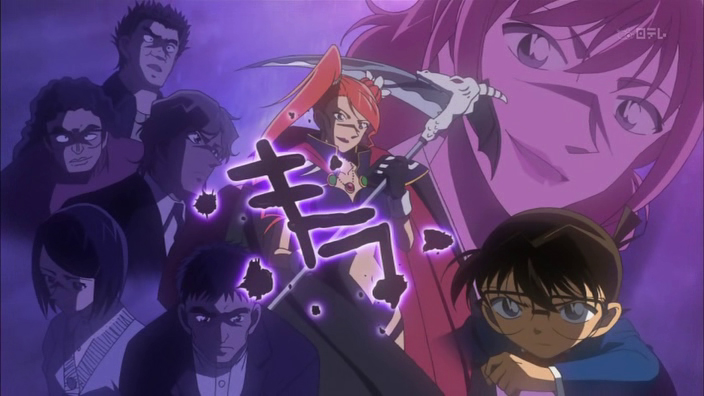
Detective Conan, as I’ve mentioned on my post about the franchise, contains many classics of basically any form of Golden Age-styled plotting you can think of. Alibi problems, locked-room mysteries, inverted mysteries, Detective Conan could probably make a top 10 list of any of them. Between both the manga and the anime, Detective Conan has produced more than its fair share of strong impossible crimes, many of which could end up on a list like this. For anime-originals, honorable mention to The Cursed Mask Laughs Coldly, which I think is more inventive and innovative, but The Séance’s Double Locked Room Mystery Case narrowly won out for its intricate intertwining of two impossible crimes. A brilliant set of two locked-rooms that rely on each other for their solutions makes this case a stand-out for its uniqueness of plotting, and the solutions are nothing to sneeze at either, but trust me when I say there are probably at least seven other Detective Conan impossible crimes equally worth mentioning at some point or another…
“The Lure of the Green Door” by Rintarō Norizuki (1991) trans. Ho-Ling Wong (2014)

The standout story from international tour of impossible crimes, The Realm of the Impossible, “The Lure of the Green Door” is a locked-room mystery inspired by the premise of an old science fiction parable by English author H. G. Wells in which a man enters a green door to another world. In “The Lure of the Green Door”, a man is murdered in his locked-and-sealed study with a green door that isn’t locked but mysteriously cannot be opened… The solution is a physical trick that plays on an old concept, but it’s a startling unique take on the concept that I’m proud to have solved ahead of time. The scale of the solution is also great without detracting from the elegance of the trick! A masterpiece of the short-form locked-room mystery.
“The Clown in the Tunnel” by Tetsuya Ayukawa (1958) trans. Ho-Ling Wong (2020)

A clown commits a murder, is seen running into a tunnel, and then vanishes before he can appear from the other side!
Tetsuya Ayukawa is a Japanese author famous for crossing wires between impossible crimes and alibi problems. As the introduction to the The Red Locked-Room collection notes, Ayukawa often uses alibi tricks to establish impossible crimes, and locked-room tricks to establish alibis. This gimmick very often lends itself to old tricks being applied in unique, novel, and stunning ways, and “The Clown in the Tunnel” is the best example of this! An absolute stunning example of how an alibi trick can lend itself to an impossible disappearance, and one of the best stories from a very good collection.
“The Ginza Ghost” – Ōsaka Keikichi (1936) trans. Ho-Ling Wong (2017)

The Ginza Ghost is a fantastic collection of impossible crimes from early Japanese crime writer Ōsaka Keikichi. Despite it existing in the early eras of the honkaku school of plotting, this collection shows off an author who demonstrates marked ingenuity and genius, with ideas that are still novel nearly 90 years in the future. The best story in the collection is easily the title story, “The Ginza Ghost”, which features a murder inside of a locked tobacco shop where a woman appears to have killed another and then herself — however, mysteriously, the murderer appears to have died significantly before her victim, suggesting the presence of a ghost who committed the crime… Ordinarily, I don’t enjoy impossible crimes that rely so centrally on an accident for the illusion to function — I’m a sucker for cartoonishly intelligent criminal geniuses — but the accident in this case is so elegant, simple, and brilliantly unique that it’s impossible not to love it.
And there you have it, my 15 favorite locked-room mysteries, which is 66.6% Japanese, quite a few of which aren’t even from novels. I’m sure Ho-Ling doesn’t mind the free publicity. I don’t mind to seem biased, but there are just so many strong and ingeniously plotted mysteries in the Japanese honkaku and shin-honkaku schools of mystery writing… This list will definitely not last long, but I enjoyed making it.
I enjoyed reading this list of some of your favorite impossible crimes. I have read a handful of these, know of many of the others but there are still a few that were completely unknown to me. I have made a note of those titles and will plan to investigate further!
LikeLiked by 1 person
I’m so sorry for the belated response! Yes, I hope you enjoy the ones you’re only finding out about now! I know you’re also reading Conan slowly, and there are quite a few standout impossible crimes, both in the 300 manga-original chapters and the 300 anime-original cases, so you’ll have your fill!
LikeLike
I am trying to space them out a bit because otherwise they’d be all I read – it’s one of those series you just want to keep reading, particularly once they start splitting stories between volumes.
LikeLiked by 1 person
I’m trying to space them out, too, but in sets. Otherwise I’d never finish the damn thing! Plus the series makes for good material when I’m feeling literary burnout. Easy crutch for keeping the blog rolling during a bad mental health month!
LikeLike
That’s a solid strategy. I have read a little ahead of where I have reviewed when I am feeling similarly afflicted!
LikeLike
It’s funny I had the exact opposite opinion between Whistle up the Devil and Come to Paddington Fair. I remember the first one spoiling itself and leading while I found the complexity and ingenuity of the second one quite amazing.
And about Case Closed, I also can recall lots of clever locked rooms in it. Now that you’re on the process of re-reading all of them, it would be interesting to read what would be your top 10 of those.
Beside’s Soji Shimada’s I hadn’t read any of the Japanese authors you mentioned, I’m going to be definitely looking out for those!
LikeLiked by 1 person
Oh, I think Come to Paddington Fair is by a massive margin much more clever and ingenious, but I ALSO think it spoiled itself by being so damnably clever. Like I mentioned in the post, I think the initial dodge that happened a little after the first suspect was arrested demands that you buy into what the book suggests is just a wild coincidence, and that’s where I think my hang-up is. There were about a dozen ways to pull this off, but saying “the guy we just followed for a chapter and a half showing up at the scene of the murder of the women who got him arrested was SIMPLY an accident” was probably the worst option Smith could’ve picked. It’s a clever trick, but one that I found out pretty much the second it happened. I think CtPF is absolutely fantastic, though, in sheer concept! Brilliantly conceived, and I adore the novel!
I hope you enjoy the Japanese authors! I think they’re brilliant.
LikeLiked by 1 person
It’s interesting, because I don’t remember any of what you mention about CtPF, at all, I think I was so amazed by the complexity of the rest that I didn’t even think of this. I may need to re read it sometime!
LikeLiked by 1 person
(SPOILERS FOR ANYONE WHO HASN’T READ COME TO PADDING FAIR)
I noticed, immediately, that the culprit had intended to be caught during the chase immediately following the murder.
What I mean by “coincidence doesn’t exist” is… The first chapter follows the culprit being betrayed by the victim. Derek Smith expects us to believe that this guy just so happens to be at the play at the same time as an actual murder, but not only that but this guy TRIED to kill the victim (but failed) at the EXACT same second a successful murder plot was conducted?
This coincidence was unbelievable to me, especially since the culprit was immediately arrested but then suspicions towards him were immediately discredited, so… what Derek Smith wanted me to think was that a person who intended to commit murder, whom we saw in the first chapter be given a motive for murder, failed to commit a murder he carried out by sheer accident at the same moment as another, unrelated murder plot? It was unbelievable, and since I’d already figured out that the culprit got caught intentionally, it was impossible for me to not put two-and-two together and reach the conclusion “The same person orchestrated both murder plots, but failed the obvious one in order to manufacture an alibi”.
LikeLike
In terms of impossible crime in mystery video games, one of my favorites is the last case of ‘Ace Attoney: Spirit of Justice,’ Turnabout Revolution. The main trick used in the case is very unique, and there are some shocking twists in that case.
Another one of my favorites is the fourth case in Danganronpa 2, which is a ‘yakata’ style mystery reminiscent of Kindaichi, Soji Shimada, and Ayatsuji Yukito’s works involving weird, tricky buildings. In mystery novels, you are only able to look at the 2D floor plans. However, because this is a video game, you can roam freely inside the mansion and figure out the secrets of the building by yourself. It is a pretty cool experience.
LikeLiked by 1 person
Spirit of Justice is the only one from the main series which I haven’t yet played. But if it contains a really good impossible crime at the end, then by all means I know what I’m playing soon…
LikeLike
You start with a top 10, you begin to extend and revise it, but after a decade, or so, you don’t even bother with numbers anymore. You just throw everything together and go, “yeah, I like those.” And then you pray nobody noticed you’re like a indecisive kid in a toy store. You’re going down that road, Isaac!
It’s interesting Death of Jezebel is your favorite Golden Age mystery over all. I’ve always suspected Death of Jezebel is the perfect introduction to people who got introduced or primarily exposed to the GAD-style detective story through Japanese anime, manga and games. I remember thinking at the time that it felt like a honkaku novel and the plot-construction even has a passing resemblance to the formula of The Kindaichi Case Files series, but those impressions are more than a decade old. So the upcoming reprint is a good excuse to reread it and see if it’s suitable material to make new converts.
The Prison Prep School Murder Case is easily one of the three best stories in the series, but, if I had to pick one Kindaichi title for a general list of best impossible crimes, it would probably be The Rosenkrauz Mansion Murders. Not as grandiose in scope or exuberantly plotted as The Prison Prep School Murder Case, but just as ingenious and original in how the setting was used to full effect.
Anyway, I look forward to see what your list is going to evolve into.
LikeLike
I’m so sorry for the delayed response, I had just gotten to work on other things and entirely forgot to respond to comments on this post!
Yes, I’ve always felt the way Brand’s solution to JEZEBEL, being this very balanced combination of misdirection and technical trickery, actually anticipates the style of plotting employed by Soji Shimada in a lot of ways… It’s definitely a novel that stands out among English detective stories, but would be at home in a collection of shin-honkaku!
You absolutely should make a ranking of all the Kindaichi’s you’ve read so I know what to look forward to! I’m actually going to start doing a Kindaichi series soon after I get through Furuhata Ninzaburou… because, you know, Detective Conan wasn’t enough and I actually *really* fucking hate myself enough to take on both series at once. (Actually, jokes aside, having manga and television shows to review takes a lot of weight off my shoulders. It makes it much easier for me to blog during literature burnouts, since reading/watching *and* discussing these series is infinitely easier than trying to force my way through a book when prose makes my eyes swim and my head water… wait…)
In fact, I actually got a copy of the first Kindaichi novel that you loved so much, though this one is unprofessionally translated by the same people who do the manga…
LikeLike
Oops I’ve only “read” like five of these. Including DGS2-3 is based though. I think more mysteries should have weird robot dudes.
LikeLike
Which four have you read besides DGS2-3? I’m really interested! I agree that DGS2-3’s style and presentation are absolutely fantastic!
I also have another post on my blog dedicated to Ace Attorney as a franchise, and one dedicated to 30 more of my favorite mysteries of all time, if you’re interested in that!
LikeLike
Other than DGS2 of course, I’ve read Death Among the Undead, Death in the House of Rain, and the whole Red Locked Room collection, and I’ve seen most of Jonathan Creek. But several of these I just haven’t gotten around to reading yet—I’m about halfway through Realm of the Impossible, so I’ll get to the Norizuki one soon. And I’m definitely moving Death of Jezebel up my list based on all the good things I’ve been seeing.
I’m fairly new to the whole mystery blogosphere, so I’ll check out those posts at some point. Though I mainly went to your blog because I think I know you from the AA Discord! I went by “Planetbox” on there. I remember you talking a lot about classic mysteries back then, but I don’t know if you’d remember me.
LikeLike